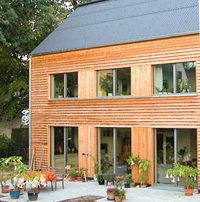It's interesting with the subject Green Building. In connection with COP15 to be held in Copenhagen later this year, the site www.activebe.com, have launched relating to this subject. Buildings are the number one consumers of energy on the planet and buildings contribute more to global warming than all the cars, planes and factories in the world combined.
Blog Post
The Great Passivhaus Face-off

Published October 21, 2009 Permalink Citation
(2009, October 21). The Great Passivhaus Face-off. Retrieved from https://www.buildinggreen.com/blog/great-passivhaus-face
Comments
I think the construction and
I think the construction and successful operation of over 13,000 buildings built or renovated to the Passivhaus standard in Europe says a great deal, including those from Italy to Sweden, and also a very few in the States. This shows that the ability to produce year after year performance with their concept of tightly built envelopes that are well insulated and that recycle their heat/cool is a good and reliable solution for a variety of different buiding types, but also for energy renovations and upgrades. And besides, because of the build quality, these buildings are known to have no iaq problems. Perhaps Straube should visit Germany and see what these houses can do.
The point is to increase the
The point is to increase the efficiency of structures, right? Arguing over the last 5-10% of gains seems a misdirection of our energies. 0.6 or 6 air changes? Either one is a huge improvement over the performance of most buildings now. While debates is healthy, and performance vs. lifetime cost should always be analyzed, we might achieve more if we directed this energy at implementing better nationwide standards and programs, educating the trades, etc. we might do well to treat our own time and energy as if it is the finite resource that keeps us dry and warm in the winter.



Add new comment
To post a comment, you need to register for a BuildingGreen Basic membership (free) or login to your existing profile.